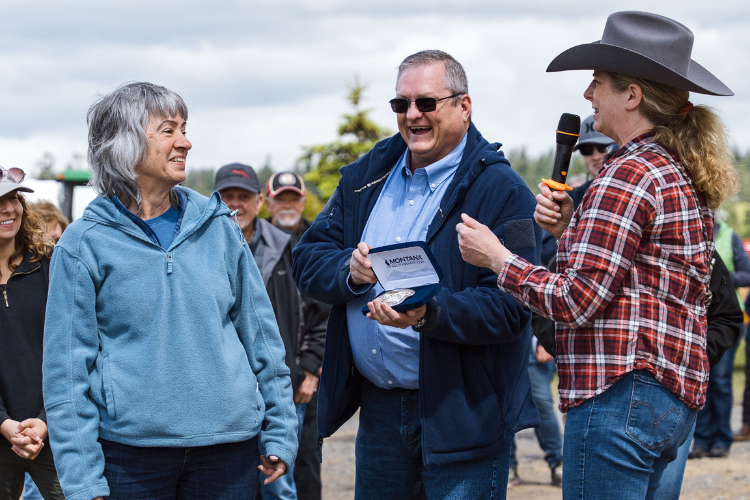Conservation and Cattle
posted on
April 22, 2024

When people think of conservation, they don't often think of cattle. But livestock play an important role in how we preserve and enhance the diverse environments we have at Colvin Ranch.
Almost 20 years ago, Colvin Ranch became the first ranch in the state to participate in the NRCS Grassland Reserve program. The program established a conservation easement on the majority of the ranch to keep the native prairies native and undeveloped forever. With less than 3% of the native prairies remaining in Southwest Washington, this type of protection for prairies as part of working agricultural lands is vital.
However, long before we entered into the conservation easement with NRCS, Fred started implementing conservation grazing practices to enhance soil health, plant diversity, and forage availability for our cattle.
A main focus of these efforts was utilizing intensive grazing, where we divide a larger pasture into smaller sections using portable electric fencing. Cattle are kept in a smaller area, and will graze nearly all of the plants in a section, rather than just selecting the most choice plants and leaving behind the undesirable ones to further propagate.
Nearly every day, we move cattle to a new section so that they always have fresh grass. The grazed sections have a longer period of time to recover, and create opportunities for native species to grow.
As part of our grazing plan, we remove cattle from the native prairie habitats while the camas and other native flowers are blooming. This gives the flowers a chance to set seed before we bring cattle back to graze down other grasses and naturally fertilize the soil, giving the seeds a better chance to get established.
As a by-product, we found that not only has this increased soil health and the forage available for our cattle, but we've found that these conservation grazing practices have increased plant diversity and enhanced the habitat for endangered species like the Mazama pocket gopher.
Over the past 10 years, we've increased the plant diversity at the ranch by 20%. We now have more than 160 different plant species that thrive here, including more than 28 critical plants needed for the endangered Taylor's checkerspot butterfly. Along with the improvement in native plant species, we've also seen a demonstrated increase in pocket gopher activity.
In addition to our conservation grazing practices, we've implemented numerous other projects to protect and enhance other habitats at the ranch, including the Garry Oak groves, forest land, and streams.
Scatter Creek runs about a mile and a half through the ranch, and is an important habitat for the overall environment at the ranch. To protect the creek, we've fenced off the banks and planted hundreds of trees to prevent stream bank erosion. And we're currently undertaking a conservation project behind Scatter Creek to create a silvopasture environment that will incorporate trees and native prairie species in a formerly neglected area.
Of course, cattle aren't the only tool that we use for conservation and habitat management. We also actively manage noxious weeds like Tansy (shout out to Katherine who has hand-pulled literally thousands of Tansy plants over the years), and spot-spray invasive plants like Scotch broom and Himalayan blackberry.
But our cattle do a big portion of the work that would otherwise have to be done by people hand weeding or spraying chemicals to manage the prairies, which simply isn't practical for this size of habitat.
When done right, grazing actually makes the environment better for native plants and animals. So when you're enjoying your grass-fed and grass-finished burger, you'll know that it's a product of the conservation work that we do every day at the ranch.



